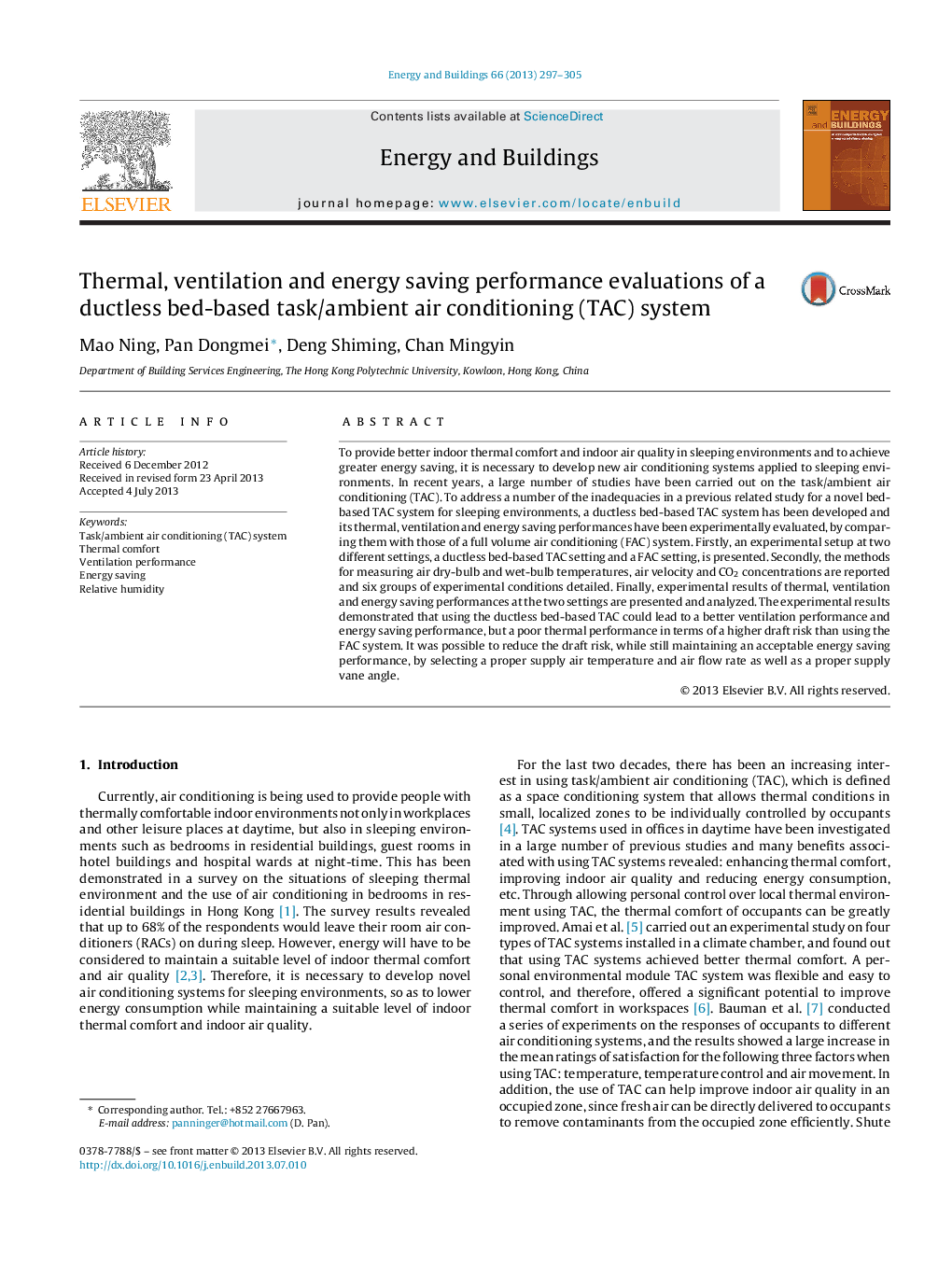| Article ID | Journal | Published Year | Pages | File Type |
|---|---|---|---|---|
| 6734659 | Energy and Buildings | 2013 | 9 Pages |
Abstract
To provide better indoor thermal comfort and indoor air quality in sleeping environments and to achieve greater energy saving, it is necessary to develop new air conditioning systems applied to sleeping environments. In recent years, a large number of studies have been carried out on the task/ambient air conditioning (TAC). To address a number of the inadequacies in a previous related study for a novel bed-based TAC system for sleeping environments, a ductless bed-based TAC system has been developed and its thermal, ventilation and energy saving performances have been experimentally evaluated, by comparing them with those of a full volume air conditioning (FAC) system. Firstly, an experimental setup at two different settings, a ductless bed-based TAC setting and a FAC setting, is presented. Secondly, the methods for measuring air dry-bulb and wet-bulb temperatures, air velocity and CO2 concentrations are reported and six groups of experimental conditions detailed. Finally, experimental results of thermal, ventilation and energy saving performances at the two settings are presented and analyzed. The experimental results demonstrated that using the ductless bed-based TAC could lead to a better ventilation performance and energy saving performance, but a poor thermal performance in terms of a higher draft risk than using the FAC system. It was possible to reduce the draft risk, while still maintaining an acceptable energy saving performance, by selecting a proper supply air temperature and air flow rate as well as a proper supply vane angle.
Related Topics
Physical Sciences and Engineering
Energy
Renewable Energy, Sustainability and the Environment
Authors
Mao Ning, Pan Dongmei, Deng Shiming, Chan Mingyin,
